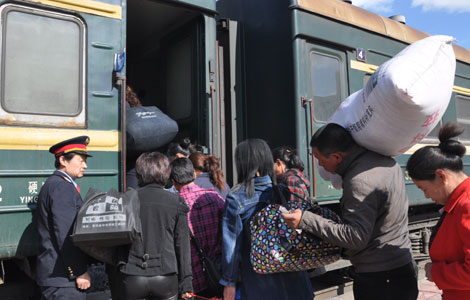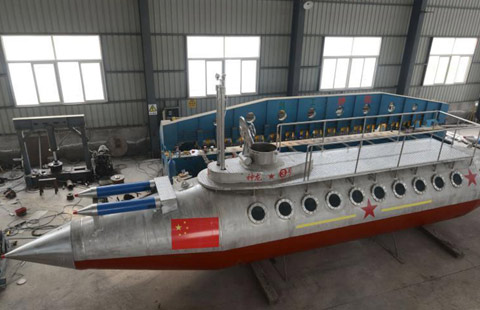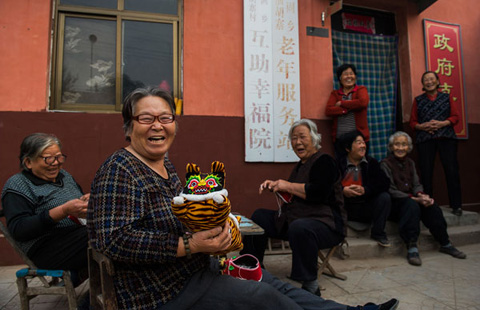Hired hands take to northeast rice fields
By Zhou Huiying in Harbin (China Daily) Updated: 2012-05-10 13:36
|
 |
|
Farmers board a train at the Harbin East Railway Station in Heilongjiang province on Tuesday, heading to the Sanjiang Plain to transplant rice seedlings. [Photo / China Daily] |
A special train full of migrant workers arrived on Wednesday morning at Qianjin town in the Sanjiang Plain, a major rice growing area in Northeast China's Heilongjiang province.
Wang Dongxu, 36, who rents 27 hectares of rice farmland, picked up 45 migrant workers from the train to take to his farm.
"Every year, we need about 60 workers to transplant rice seedlings. Most of them are employed from the areas outside the plain. Last year, thanks to the help of these migrant workers, rice transplanting finished at the best time and I had a good harvest," said Wang.
Given the climate in Heilongjiang, the best time for rice seedling transplantation is from May 5 to 25, which can help ensure a good harvest.
"Last year, the income from my rice farmland reached 300,000 yuan ($47,500), yielding a 100,000 yuan profit. This year, I hope the transplantation of rice seedlings will go well and we can harvest in the autumn," said Wang.
Qianjin Farm is one of the important rice farms on the Sanjiang Plain. The farm has 53,000 hectares of arable land and 52,000 hectares are used to grow rice.
Although in recent years, agricultural mechanization has greatly increased, rice seedling transplanting still relies heavily on manual labor.
As there are not enough farmhands in local areas to do the job, groups of migrant workers move to the Sanjiang Plain every year. Most of them come from the rural areas in Harbin and Suihua, in Heilongjiang, and some rural counties in neighboring Jilin province.
According to the Harbin Railway Bureau, the two rail lines opened on Sunday - one from Jiamusi, a city in Heilongjiang, to Qianjin town; the other from Harbin East Railway Station to the town - and are estimated to have transported 35,000 migrant workers as of May 13.
Since 2000, when the administration started the service, the special trains have transported 1.27 million migrant workers to and from the rice production areas in Heilongjiang.
Sha Fengxia, 45, a farmer from Fu'an village, Yushu, Jilin province, was one of the workers taking the Wednesday train to Qianjin Farm.
"In the following two weeks, we will work on the Qianjin Farm, transplanting rice seedlings," he said.
"I have come to the farm every spring since 2007. There are eight people from our village on this train this year, and we will do the same work. Everyone can get 300 yuan per day, and we can make 5,000 to 6,000 yuan by the time we go home. That's much more than I can earn at home," said Sha.
Because the climate is different, spring sowing can be finished earlier in Jilin than in Heilongjiang. So many farmers come to Heilongjiang every year to make some extra income.
"Since the late 1980s, farmers from other areas have been working on the Sanjiang Plain during the rice transplanting period. Since 2000, the number has continued to grow steadily," said Hou Lihong, director of the labor transfer office of the Heilongjiang provincial rural affairs commission.
The trains pass several of the major rice farms. Besides the Qianjin Farm, there are Hulin Farm, Jiansanjiang Farm, and Dongfanghong Farm," said Ma Cheng, director of Harbin East Railway Station's passenger transport section.
zhouhuiying@chinadaily.com.cn
- UK becomes top destination for outbound deals
- Alibaba to step into console game market: report
- NDRC approves $34b railway investment
- Reform key as new age begins
- Debt revamp opens door for global investors
- Chinese businessmen fret over rouble plunge
- Over 50% of Chinese worried by 'too high' house prices
- Sam's Clubs not the answer for Wal-Mart
















